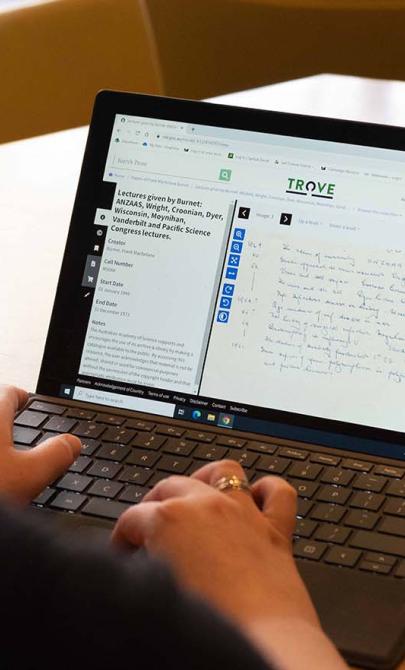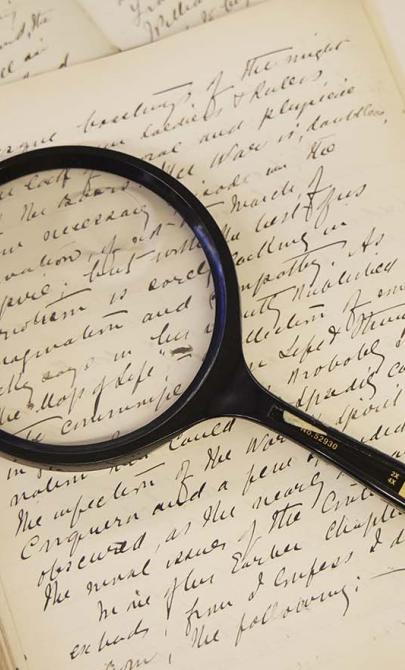Literature
The Story of The Stone
The Story of the Stone (also known as Dream of Red Mansions) is widely regarded as one of the greatest achievements in Chinese literature—and as a masterpiece of world literature.
Written in the 18th century by Cao Xueqin, the novel circulated in manuscript form before being printed with illustrations in 1799. It was composed in high-class vernacular Chinese, rather than classical Chinese, and includes a significant amount of poetry.
The story is considered semi-autobiographical. Like his protagonist Baoyu, Cao was born into a wealthy Manchu family with close ties to the imperial court, only to experience a decline in status during the 18th century.
The narrative begins with a sentient stone who asks a Buddhist monk and a Daoist priest to allow it to live in the mortal world. This stone is reincarnated as Baoyu. A central storyline is the relationship between Baoyu and his two female cousins:
- Lin Daiyu, the incarnation of a magical flower, who is emotional and poetic
- Xue Baochai, intelligent, composed and capable
Baoyu and Daiyu must learn the danger of attachment, a theme rooted in Buddhist philosophy.
Levels and layers
The novel can be read on multiple levels:
- as a love story
- as an exploration of the transient nature of life
- as a mystical tale exploring Buddhist themes of karma, attachment and enlightenment
- as a psychologically realistic biography
- as a social document reflecting the values, customs and expectations of upper-class Chinese and Manchu society
With over 30 major characters and more than 400 minor ones, the novel offers a detailed portrait of Chinese social life, family dynamics and the idealised virtues expected of young women.
Biographies of Women
Models of conduct were laid down under the Qing dynasty that prescribed appropriate behaviours considered fundamental to maintaining social order. Though these models existed for both men and women, expectations of women were particularly exacting.
Literacy among elite women was relatively high, which led to strong demand for literature. Much of it reflected contemporary values and standards. Self-sacrifice was often portrayed as the highest virtue a woman could achieve. Women who prioritised the comfort and safety of male relatives were highly honoured.
The text Biographies of Women was first compiled during the Han dynasty by Liu Xiang (77–6 BCE). Wang Daokun later expanded on this work, and a printed edition was illustrated by court painter Qiu Ying (1494–1552). The National Library of Australia holds a 1779 edition thought to have been printed with woodblocks prepared under the Ming dynasty.

Xiang Liu & Daokun Wang, Lie nü zhuan : shi liu juan / Wang Daokun zeng ji ; Qiu Ying hui tu, 1779, nla.gov.au/nla.cat-vn3792445
Xiang Liu & Daokun Wang, Lie nü zhuan : shi liu juan / Wang Daokun zeng ji ; Qiu Ying hui tu, 1779, nla.gov.au/nla.cat-vn3792445
Illustrated Tales of Retribution for Drowning Daughters
Illustrated Tales of Retribution for Drowning Daughters is a morality book. These books were typically published by elite philanthropists aiming to reform behaviour among the poor, thereby gaining respect and moral merit. This example warns against female infanticide by depicting supernatural punishments.
Ye Wenlan’s preface draws on the prevailing moral code, which prized ‘good’ behaviour. He reminds readers that ‘Retribution is obvious; Heaven’s net lets nothing through.’ In support of an anti-infanticide campaign, Ye compiled 60 tales from earlier sources. While the preface is written in classical prose, the stories are in colloquial Chinese. Ye added striking illustrations to reinforce the moral messages and ensure accessibility, even to less educated readers.
One story tells of a woman who drowned four daughters over the years. When she finally bore a son, he disappeared at birth. She saw four small ghosts—her daughters—return to punish her. She screamed for five days until she died, bleeding from the eyes, nose, mouth and ears.
Conversely, the book also contains stories of people rewarded for saving female babies. In one, the 80-year-old prefect of Changsha is gifted a son who passes the civic examinations and becomes prefect himself.

Wenlan Ye, Jie ni nü guo bao tu shuo / Ye Wenlan bian. Xiamen: Bao shan tang, 1864, nla.gov.au/nla.obj-77157699
Wenlan Ye, Jie ni nü guo bao tu shuo / Ye Wenlan bian. Xiamen: Bao shan tang, 1864, nla.gov.au/nla.obj-77157699
Learning activities
Activity 1: Classic literature discussion
Ask students to name classic literature authors whose works have had enduring appeal. What qualities make these stories timeless?
Activity 2: Themes in The Story of the Stone
Use these questions to guide class or group discussions:
- Which themes in The Story of the Stone reflect universal human experience?
- What can literature tell us about a society?
- Can literature serve as a valid historical source? What are the risks or biases to consider?
- What can we learn from a physical book (like the 1791 edition) beyond its story?
Activity 3: Historical report
Students write a report, using the novel and secondary sources, on what The Story of the Stone reveals about late 1700s Qing China, including:
- social structure and mores
- Chinese and Manchu values, especially regarding women
- family politics
- influence of religion
They should also consider whether the novel’s ongoing popularity reflects a continuation of these values.
Activity 4: Comparative analysis: Biographies of Women
- Compare the National Library of Australia's 1779 edition with a later version from the National Library of China. What are the differences? What might they indicate?
- Discuss the significance of the text being updated and reprinted across centuries. What does this suggest about enduring cultural values?
Activity 5: Exploring Illustrated Tales of Retribution for Drowning Daughters
- How does the 1654 imperial edict against female infanticide challenge modern assumptions about this practice?
- Are these morality tales fiction? If so, can they still provide valid historical insights? How do they compare with religious texts such as the Bible, Quran, Torah or Tripitaka?
- Students imagine they are tasked with creating a persuasive campaign against female infanticide for Qing China. Using cultural knowledge, they create a poster or booklet.
- Alternatively, students reimagine the book for a contemporary audience. What would change? Would religious or superstitious arguments still work?
- As a final extension, students consider what a modern moral issue equivalent to female infanticide might be. How would they approach writing a contemporary moral treatise?





